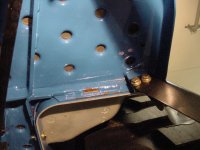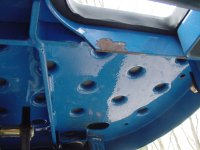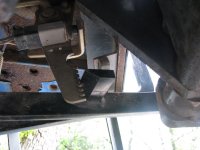Idle - Put the throttle lever about 1/3 to 1/2 way up to start. Not sure what the manual says regarding this, but I don't think I've ever started any of my tractors without some movement up. What I did on my 40D was find where it runs at about 1500 rpms and mark that spot with a marker, so I move it to that exact position to start every time. My 40D (and I presume all of them) have a little problem with the governer not working well, especially when cold, at less than 1000 rpms. As you note, it gets better when it warms.
Deck - there are countless reports of the Class III boomers having paint and rust problems on the underside of the platform/deck. In the early days of TBN, I think I even recall where someone got a new platform from their dealer as a result of it being so bad on their tractor. Mine, a 2001 model, started chipping/flaking, with rust underneath the paint, after the first year. My tractor has never sat outside overnight, nor left wet. I attributed the problem to poor metal prep, maybe even painting over rust, or problems with all these low VOC paints used now, which maybe don't have the same rust inhibiting nature as good old oil enamels. I guess if water where to get under your rubber mat, and stay there for some time, it contributes to the problem, but for most of us, that is not the real problem. In fact, on mine, the flaking started on areas well away from the rubber, on the bottom, and typically on the bracing. I've attached a few pictures taken when the tractor was only about a year.
Differential Lock - yes you need to keep your foot on it, or else it disengages. This may be a bit awkward, but I don't think you'd want it otherwise, less you forget it's on and damage the tractor. The older Ford 1310/1320 - 2120 tractors had the pedal in the exact same position and I think it was thought to work OK, so the design has just continued. Probably the thinking is that you are only using it on rare occasions, so keep it out of the way. I personally like it there.



